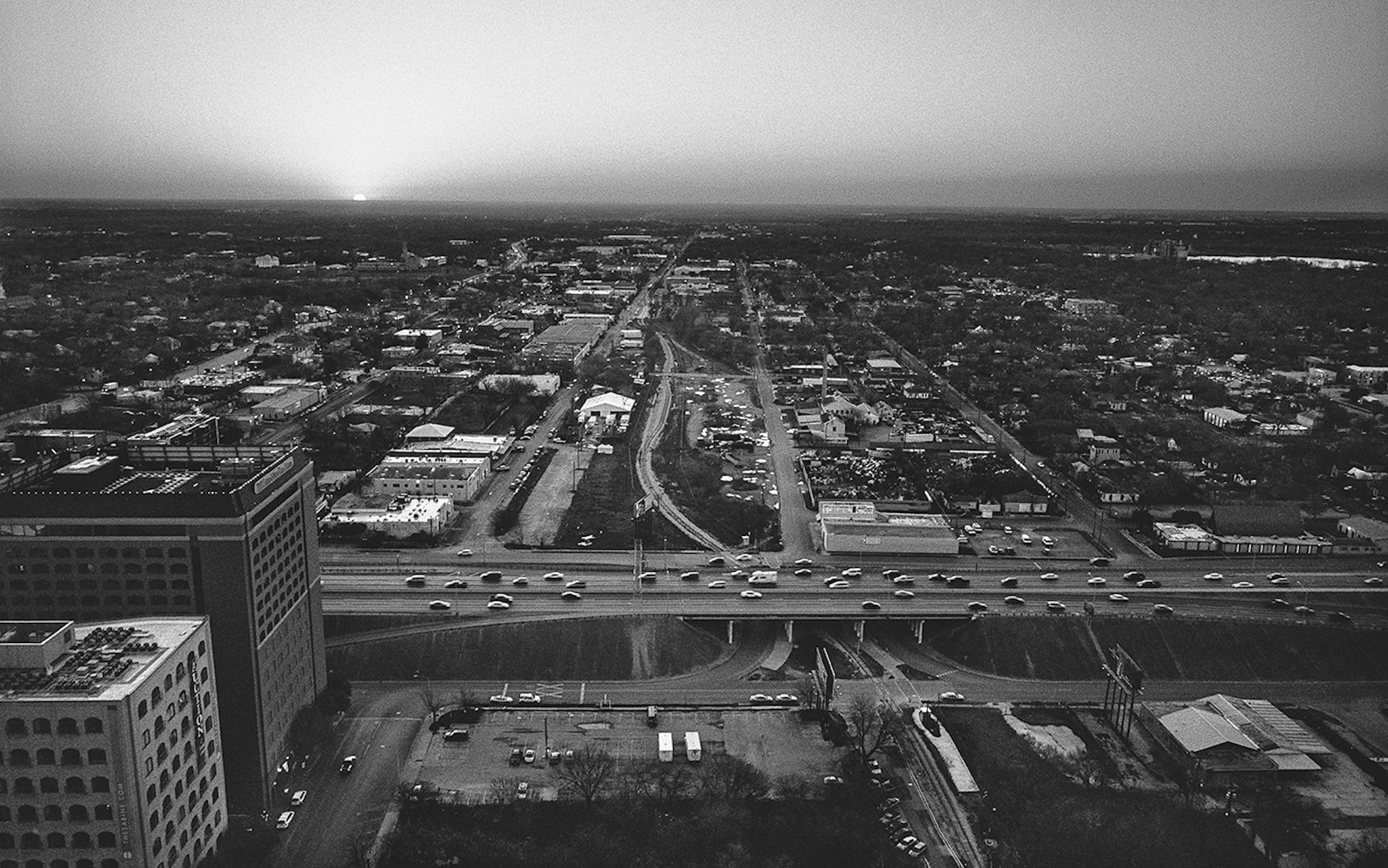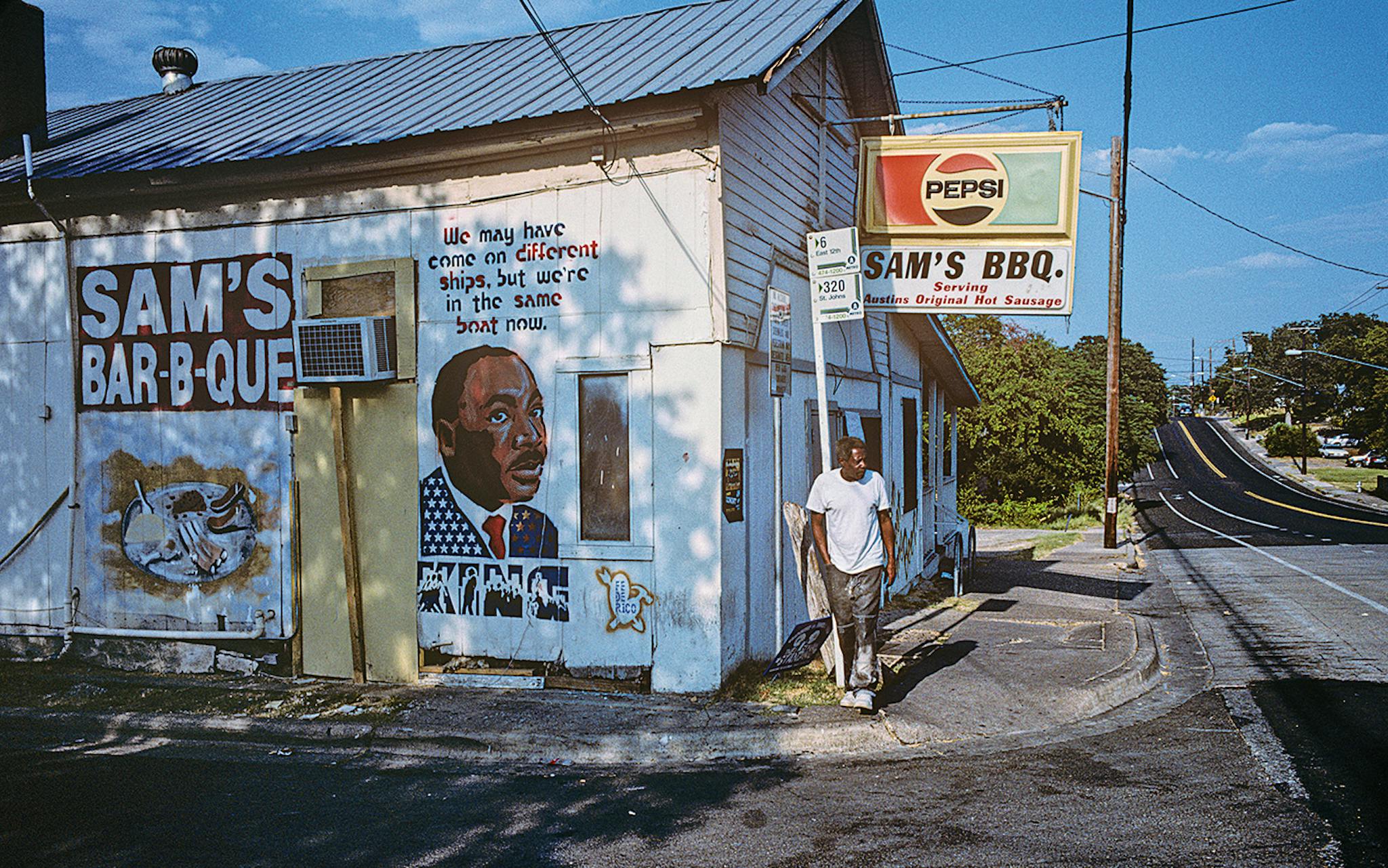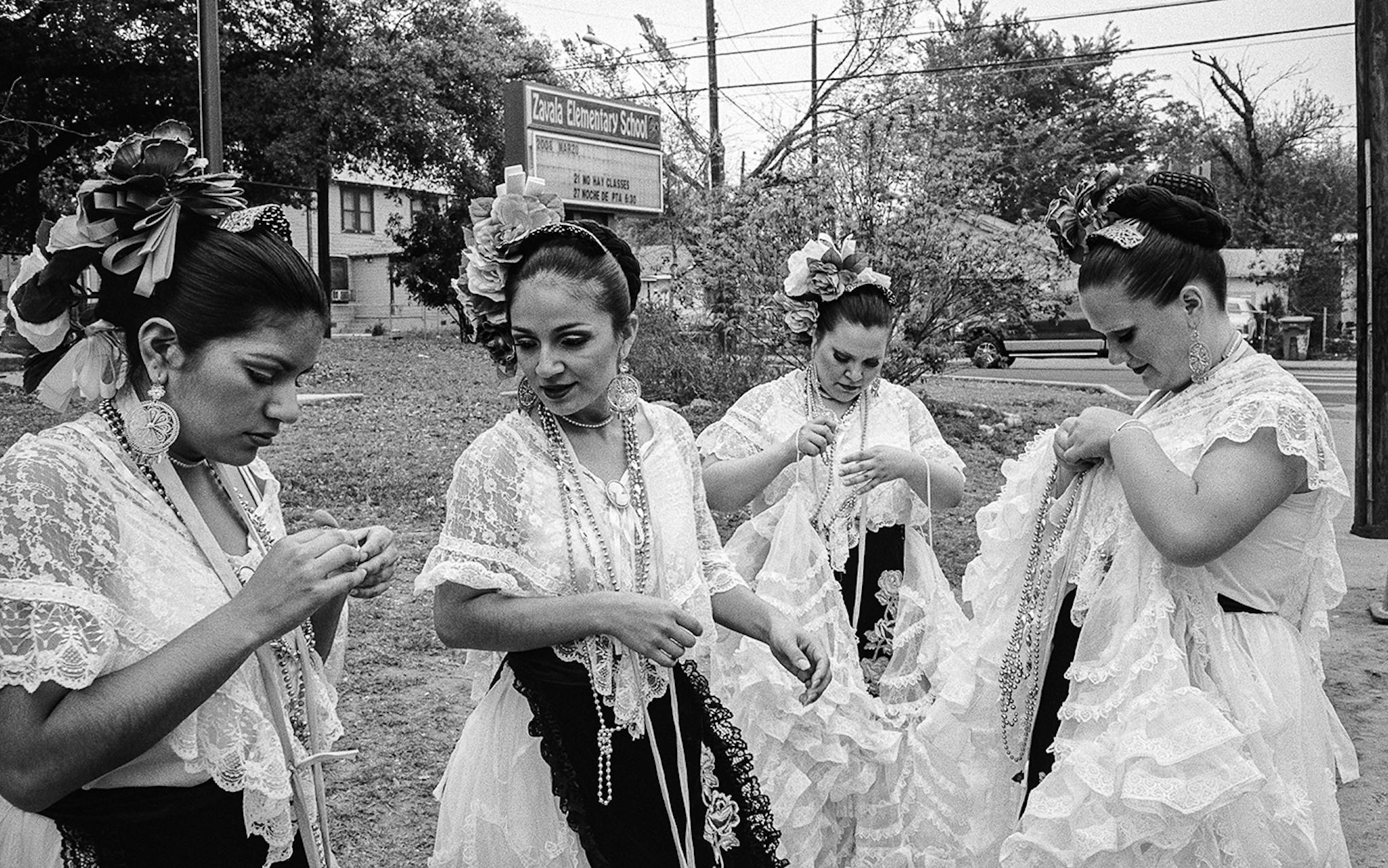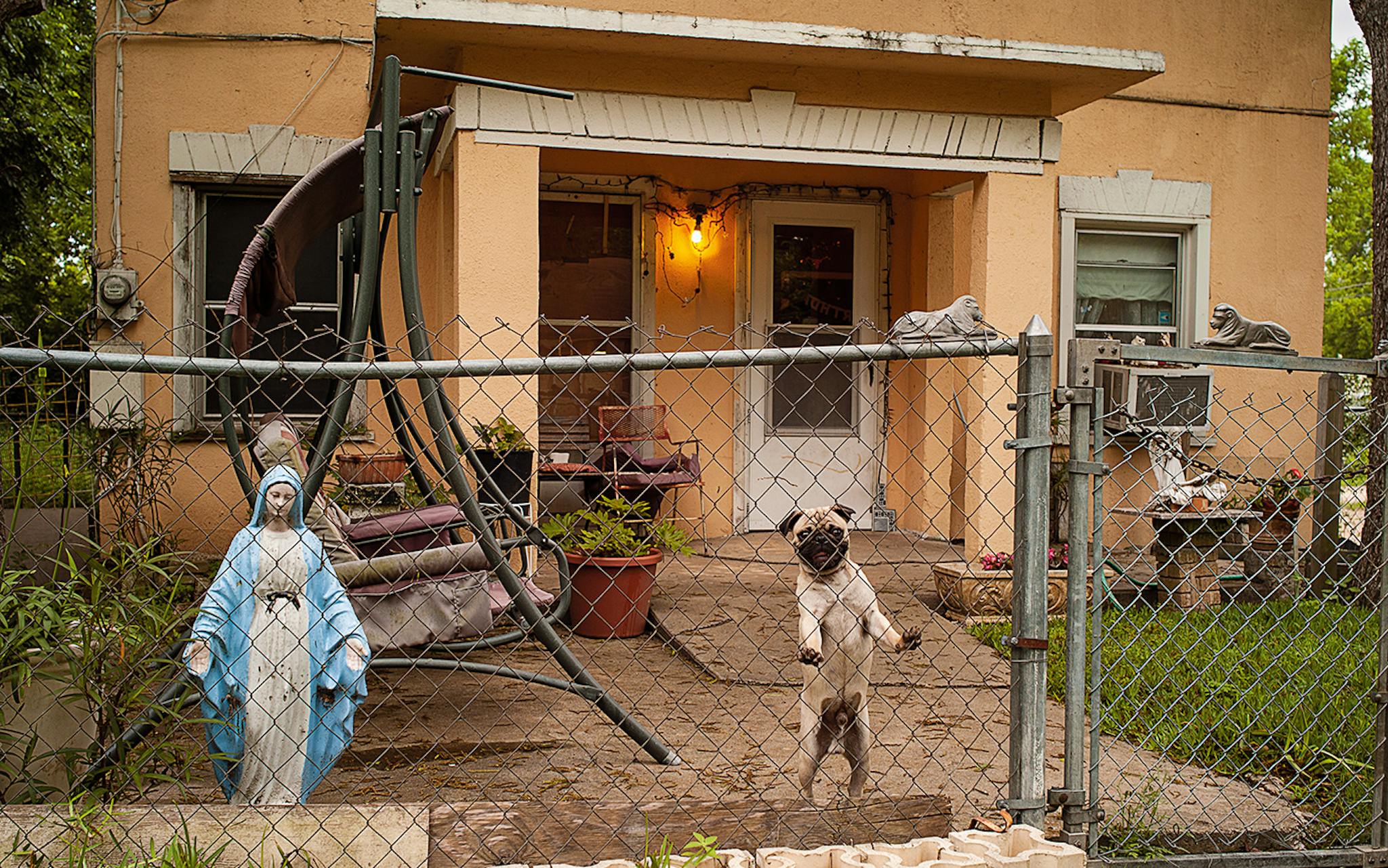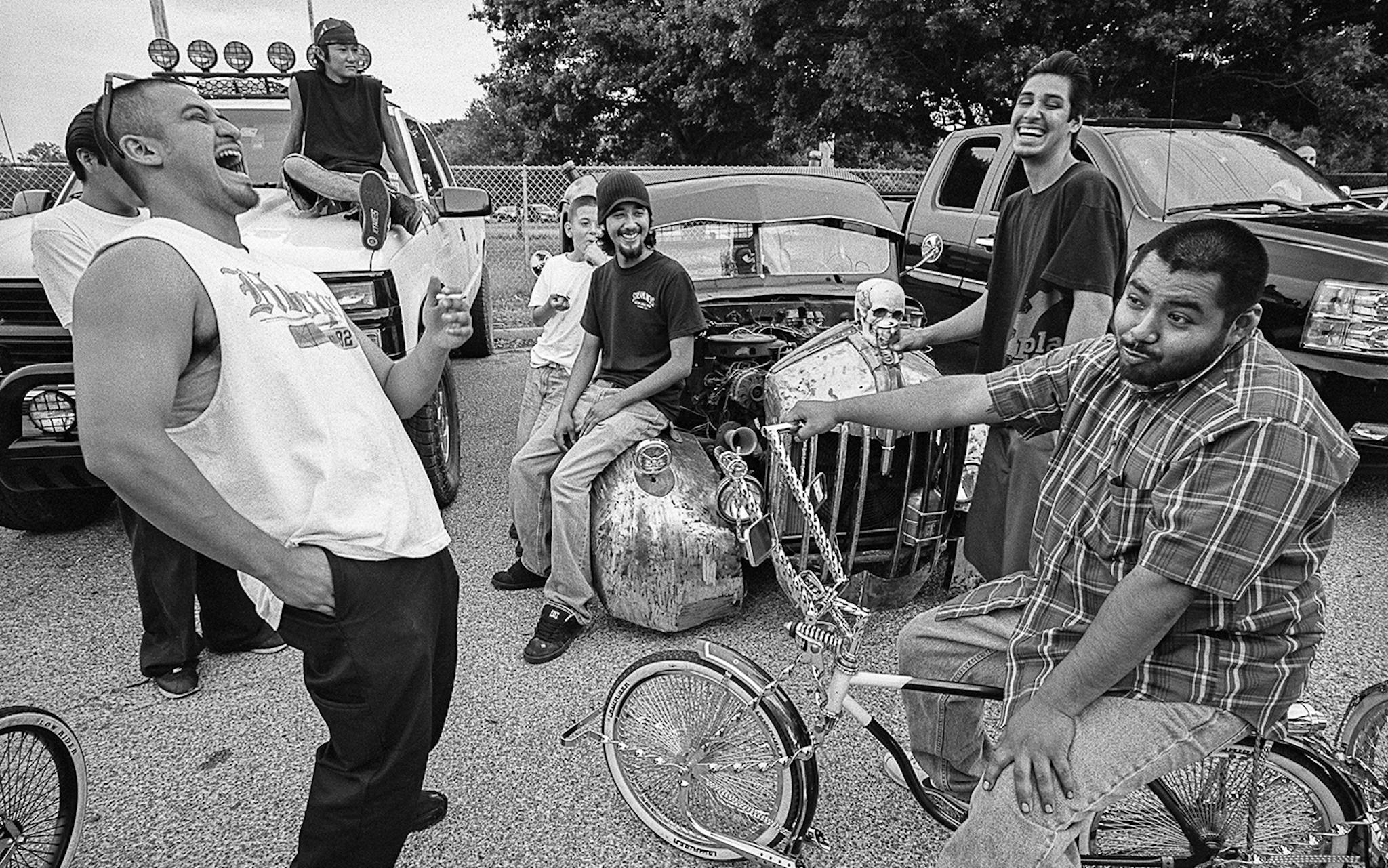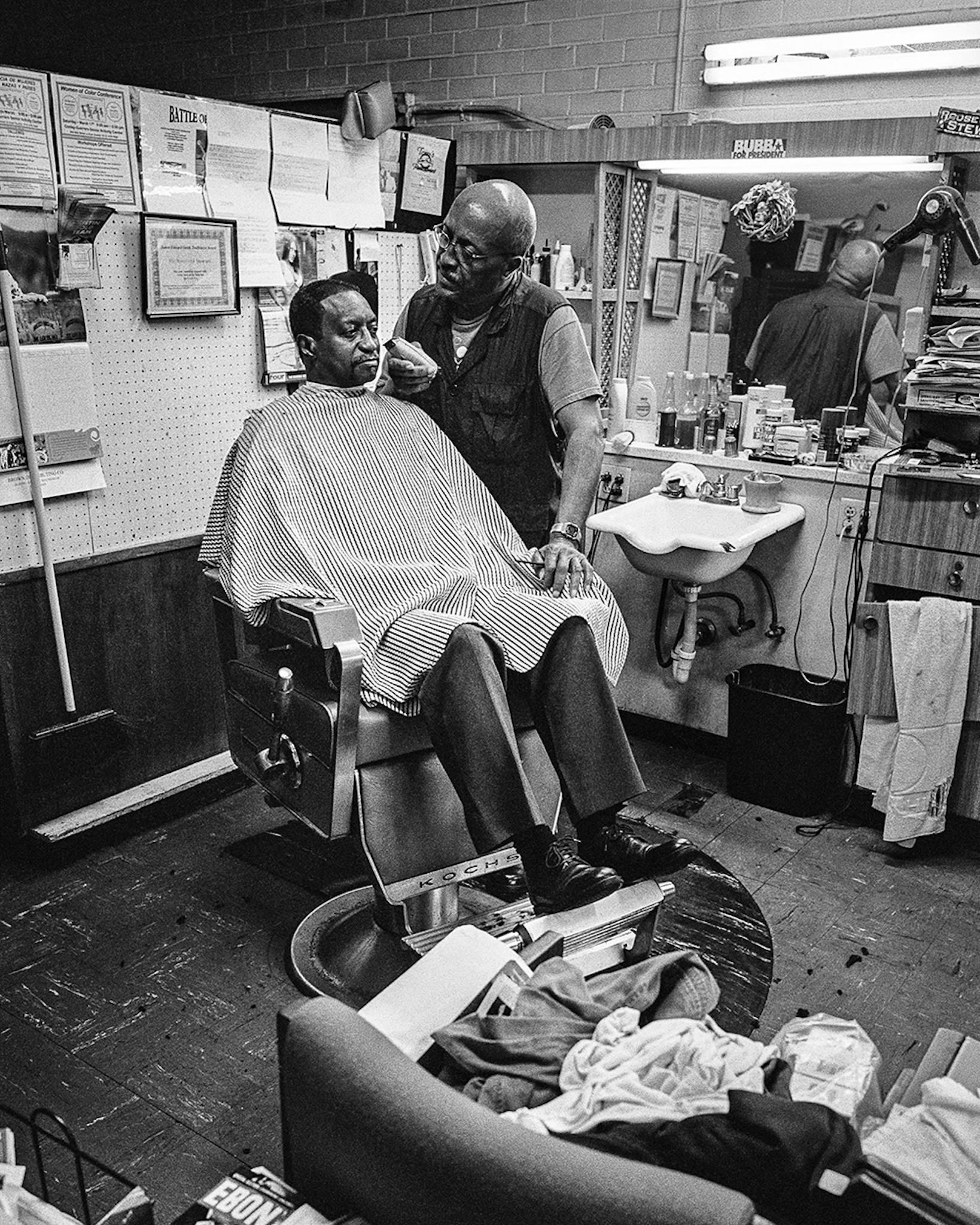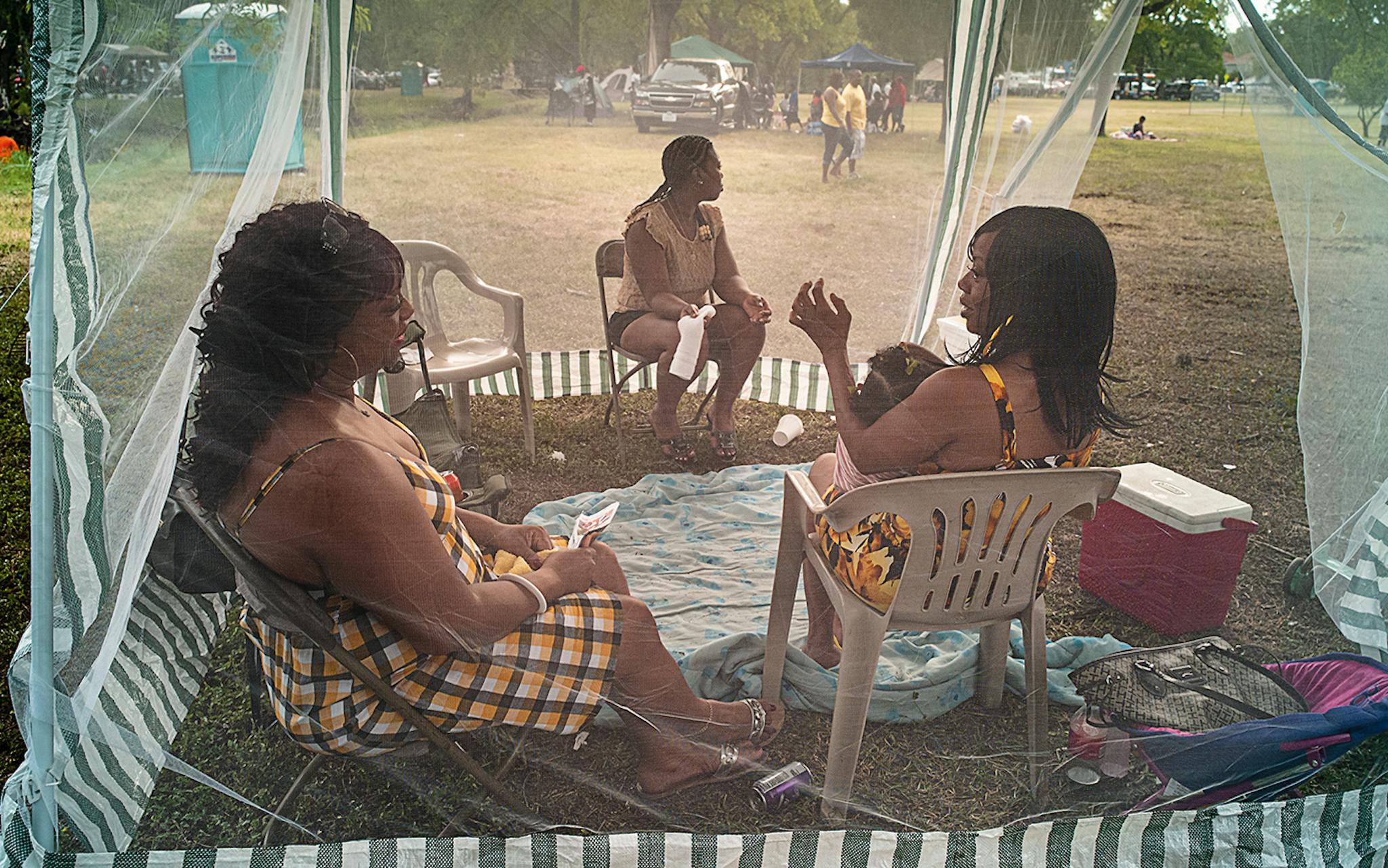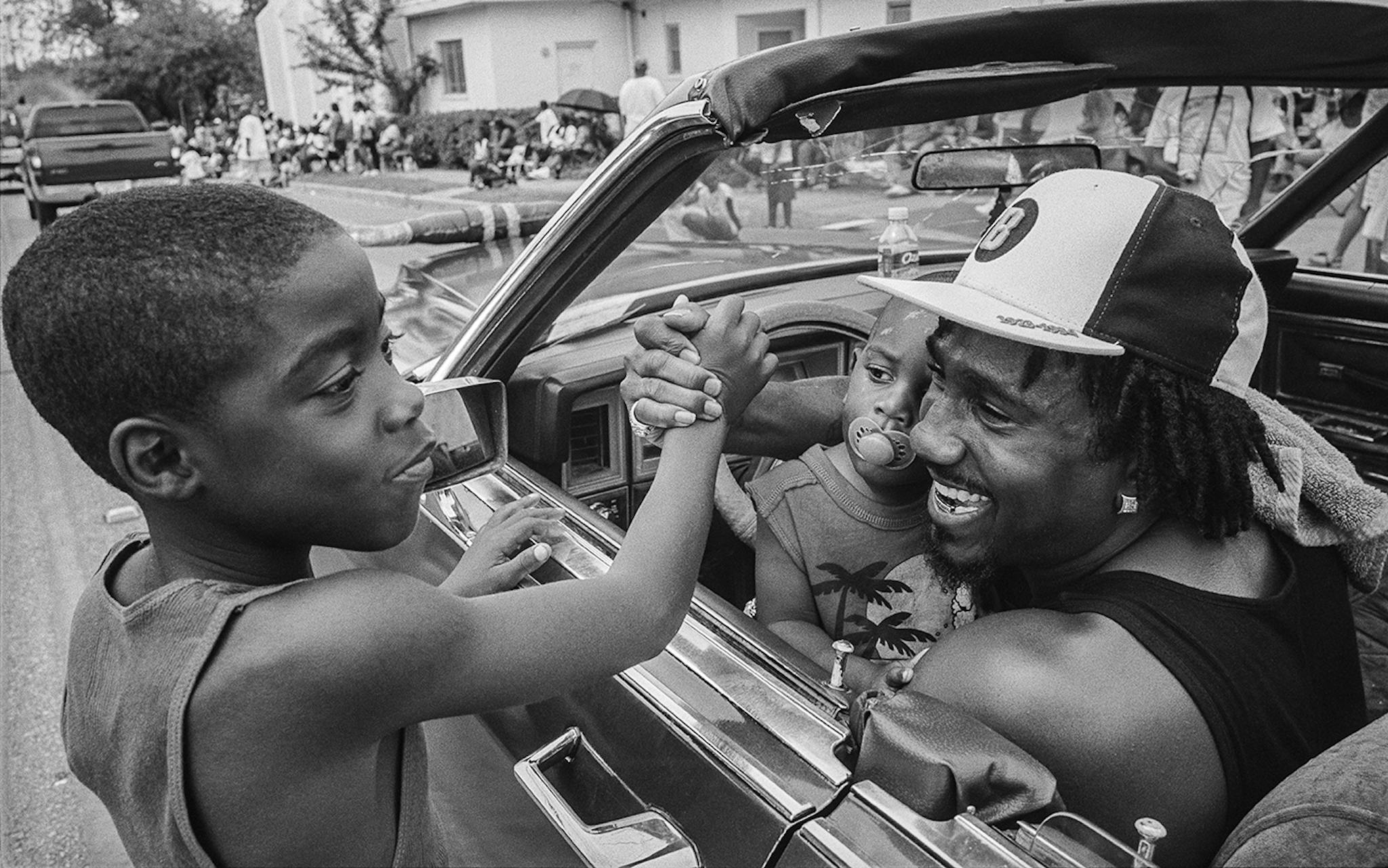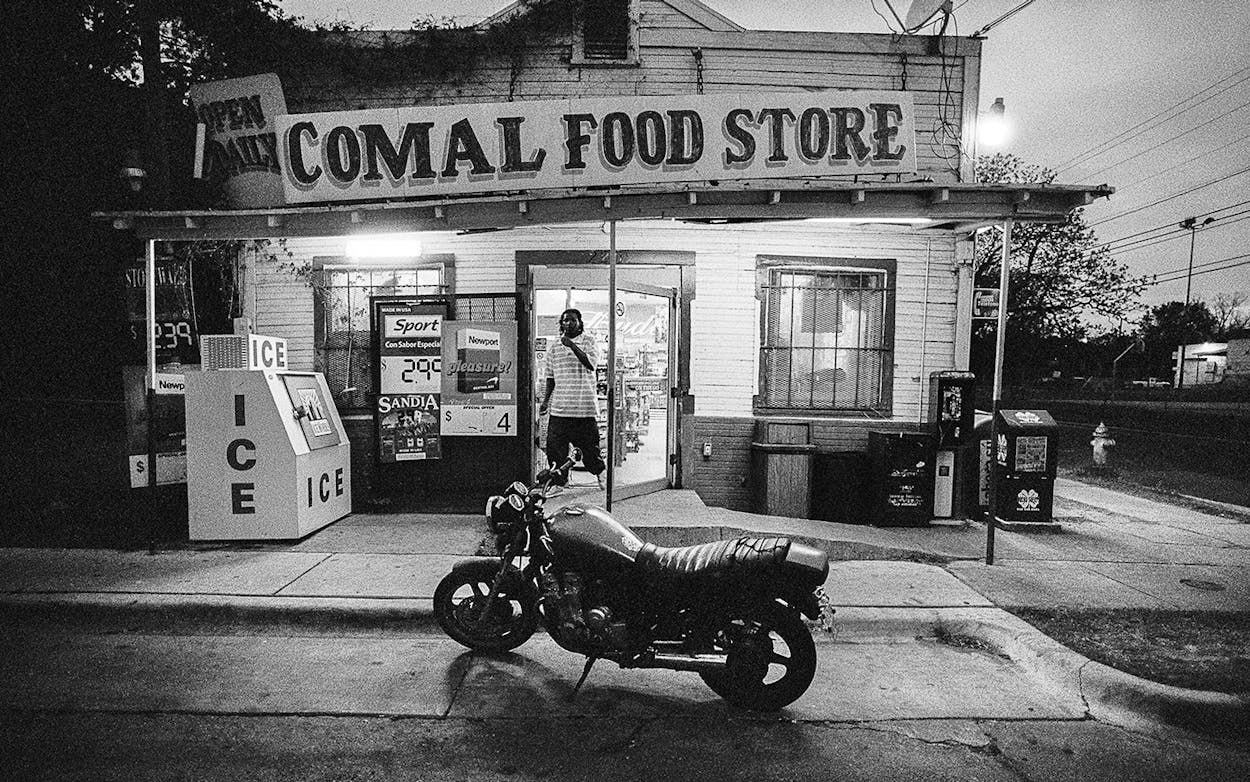For four years, beginning in 2006, Austin photographer John Langmore trained his camera on a moving target: the city’s quickly gentrifying East Side, long home to much of Austin’s African American and Latino populations. But as the city’s economy boomed in recent years, new arrivals, many of them white professionals, began moving in, looking to live near the city’s vibrant downtown.
In many ways, this was a positive development. Derelict lots were cleaned up and put to good use. Longtime homeowners sold their houses and made a windfall. Some veteran merchants prospered as new money flowed in. But as Langmore’s Fault Lines: Portraits of East Austin (Maverick Books / Trinity University Press) makes clear, there have been profound costs as well: two communities bound by the thick, multigenerational ties of family and tradition are in danger of coming apart. “There was a rich sense of community in East Austin, a real ‘it takes a village’ approach to raising the younger generation,” resident Johnny Limón writes in an essay included in the book. Much of that has disappeared.
Langmore focuses on those old ways, rather than on the conflict between old and new. The East Austin portrayed here is a place of street fiestas, barbershop gossip, and Sunday-morning church services, not brewpubs, fancy coffee shops, and limestone-and-brushed-nickel apartment complexes. It’s a snapshot of a place that, Langmore writes, “time will render unrecognizable to future generations.”
